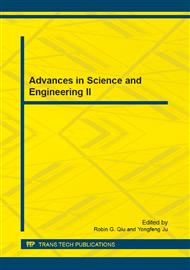p.421
p.428
p.436
p.443
p.449
p.455
p.464
p.470
p.477
Directional Human Fall Recognition Using a Pair of Accelerometer and Gyroscope Sensors
Abstract:
Human fall in the elderly population is one of the major causes of injury or bone fracture: it can be a cause of various injuries (e.g., fracture, concussion, and joint inflammation). It also could be a possible cause of death in a severe case. To detect human fall, various fall detection algorithms have been devised. Most fall detection algorithms rely on signals from a single accelerometer or gyroscope and use a threshold-based method to detect the human fall. However, these algorithms need careful adjustment of a threshold for each subject and cannot detect the direction of falls. In this study, we propose a novel fall recognition algorithm using a pair of a tri-axial accelerometer and a tri-axial gyroscope. Our fall recognition algorithm utilizes a set of augmented features including autoregressive (AR) modeling coefficients of signals, signal magnitude area (SMA), and gradients of angles from the sensors. After Linear Discriminant Analysis (LDA) of the augmented features, an Artificial Neural Nets (ANNs) is utilized to recognize four directional human falls: namely forward fall, backward fall, right-side fall, and left-side fall. Our recognition results show the mean recognition rate of 95.8%. Our proposed fall recognition technique should be useful in the investigation of fall-related injuries and possibly in the prevention of falls for the elderly.
Info:
Periodical:
Pages:
449-454
Citation:
Online since:
October 2011
Authors:
Keywords:
Price:
Сopyright:
© 2012 Trans Tech Publications Ltd. All Rights Reserved
Share:
Citation:


